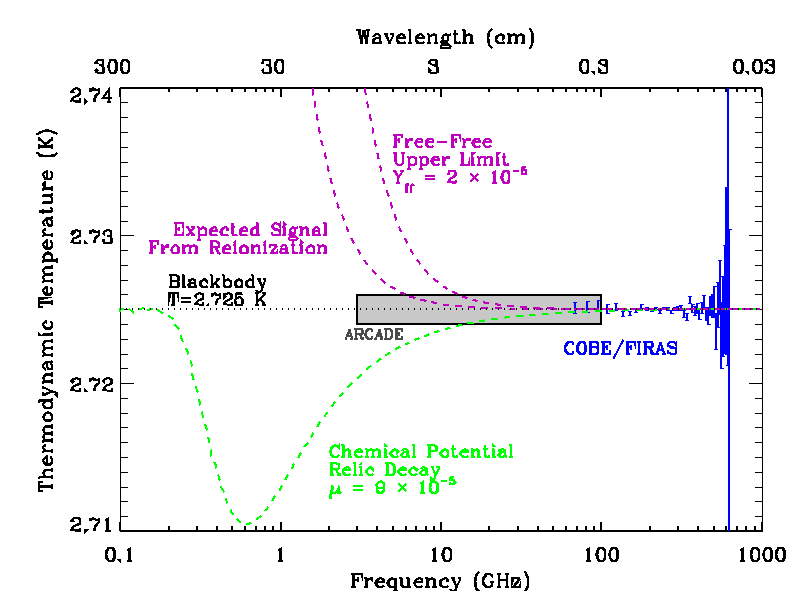 |
 |
Upper Limits to Distorted Spectra
Distortions in the cosmic microwave background
away from a perfect blackbody curve
are an expected part of all viable cosmological models.
Detecting these distortions
or showing that they do not exist
is an important step for understanding the early universe.
The
plot below
shows current 95% confidence upper limits
to distorted spectra.
The purple curves show the upper limit and predicted signal
resulting from
free-free emission from ionized gas
at the epoch of
reionization and structure formation.
The predicted signal
from the formation of observed structure
lies well below the current upper limit,
set by ground-based measurements at centimeter wavelengths.
Detecting this signal requires mK precision
at wavelengths longer than 10 cm,
well within the capabilities of ARCADE.

The green curve shows the chemical potential distortion
from the decay or annihilation of
massive particles
in the early universe.
Recent analyses of gamma ray emission
hint at a signal from annihilating dark matter
toward the Galactic center.
Since the annihilation rate varies as z^6,
annihilation in the early universe
could produce a measurable energy input,
resulting in a detectable distortion.
Measurements of the CMB spectrum
can provide important constraints on
dark matter properties
and high-energy physics.
The gray box shows the ARCADE frequency range
and the anticipated 1 mK error budget.
ARCADE will measure the CMB spectrum
at wavelengths 15 cm to 3 mm
(3 GHz to 90 GHz frequency)
where these cosmological signals are largest.
|
|


